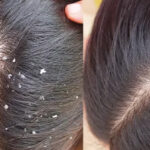Hyperpigmentation is a typical disease of the skin that prompts regions or spots of healthy skin to progress toward becoming darker than encompassing strong tissue. While this can occur anyplace on the body, it is frequently most apparent in your face, arms, and legs for many.
Pigmentation begins subtly but progressively becomes more pronounced, and a greater concern about the color of the skin tone. To get this ready, we need to investigate what hyperpigmentation is, the main causes for its existence, and also some strategies that may be used to administer or even reduce their appearance.
What Is Hyperpigmentation?
It is an excess of melanin, the pigment responsible for skin color that produces itself in specific locations. One would be to shield our skin (as a result of sunshine, for instance) and the variable that makes melanin provide this color is named Melanocytes.
Hyperpigmentation — A condition characterized by dark patches on the skin, when an area of your skin has more melanin than one would with regular pigmented skin. This condition may involve all types of skin and actually is more apparent in people with a medium-dark spectrum.
This is because darker skin inherently has more melanin, which can lead to pigmentation taking a visible form. Body coloration can appear in many shapes and sizes, ranging from small spots to extensive areas, and is caused by a variety of reasons.
Classification of Hyperpigmentation
Before proceeding to the symptoms of hyperpigmentation, it is helpful to step back and consider the classification of pigmentation and its presentation. Knowing such types of coloration may help in reinforcing the type of pigmentation issues that one may be experiencing.
1. Sub-Type 3 — Sun-induced Hyper-Pigmentation (Solar Lentigines or Sunspots).
A typical phase of this form of pigmentation is caused by the influence of the sun. In this case, pigmentation is one of the most common types of skin disorders.
It is a result of excessive exposure to UV rays which stimulate the skin’s natural defenses through increased production of melanin.
Based on their name, sunspots appear in most of the parts that are frequently exposed to the harsh rays of the sun like the face, arms, and shoulders
2. Melasma
Melasma is a form of hyperpigmentation that occurs accentuated often due to hormonal causes. It manifests itself in the form of darker spots, usually on the cheeks, across the cheeks, and above the upper lips.
Women suffering from, for example, pregnancy, birth control pills, or hormone replacement therapy are more prone to develop melasma. Unlike sun damage, melasma is not only present in the upper portions of the face but also emerges in a pattern that is relatively even on the face.
3. Post-Inflammation Hyperpigmentation (PIH)
The papules that develop after injury of the skin, for example, post-hormonal acne, and post-rash injury, are referred to as post-inflammatory hyperpigmentation. After the skin tissues undergo renewal, there is an avascular area that has a darker pigmentation of the skin from the prior injury.
This specific form of coloration of the skin is common among many, especially those with darker skin tones as the epidermis naturally tries to heal and create melanin during the process.
Causes of Hyperpigmentation
It can develop for various reasons. Some factors are environmental while others relate to lifestyle or genetic predispositions. Recognizing the factors that contribute to the condition can enable rheumatoid arthritis individuals to adopt measures that may limit its occurrence.
Sun Exposure
One of the primary causes of pigmentation is sun exposure. When exposed to the sun’s UV rays, melanin production increases to avoid skin harm; this is a natural response.
Excessive and prolonged exposure to the sun will, after a period, lead to hyperpigmented spots. These are commonly known as sunspots; occurring on the skin surface of any body part that has been exposed to the sun.
Using sunscreens on a daily basis will help to protect against this situation. However, once the skin has tanned, a lot of time may go into getting rid of coloration.
Hormonal Characteristics
Hormonal changes, especially in women, are another common risk factor for pigmentation. Melasma specifically, can be seen in women during pregnancy when using hormonal contraceptives, or during menopause.
It is a type of pigmentation that is dependent on hormones. Hormones act on melanocytes, the cells that manufacture melanin, causing patches of dark skin to form.
Injuries to Skin or Inflammation
Any injury of the skin which includes a cut, burn, or almost any inflammatory skin condition such as acne causes coloration in the body.
Once the skin is repaired, it may cause overproduction of melanin in that area, leading to darkening of the skin. This type of darkening of the skin due to inflammation is called post-inflammatory hyperpigmentation and is very common for people with dark skin tones.
Advanced Age
As we get older, our body naturally processes differently including the formation of the hyperpigment part of the skin. As one age, the number of melanin-producing cells also goes up leading to a splotchy-looking skin.
Cumulatively, sun exposure over the years makes older generations in particular have age spots or solar lentigines.
Genetic factors
Genetic causes may also be related to pigmentation. There are people who are simply more genetically focused on too much melanin production.
This is true for example for darker skin where people with naturally higher melanin content are genetically more inclined to disproportionate pigmentation.
Strategies in the control and minimization of the effects of skin coloration
While it is likely that hyperpigmentation can be avoided in every case since its primary factors are genetic or endocrine, there are a few ways that may assist in the prevention of skin coloration in various factors.
1. Sun Protection
When it comes to managing and preventing skin coloration, you cannot stress the importance of sun protection enough. Applying a minimum of SPF 30 every day blocks UV rays and melanin formation as well from happening.
The use of sunscreen, protective clothing (wide-brimmed hats and long-sleeve shirts), as well as sunglasses help reduce sun exposure leading to the development of sunspots or melasma.
2. Using Topical Treatments
Because they have been found to lighten dark spots, increase skin cell turnover, and an even-toned complexion over time some commonly used topical treatments include vitamin C (for pigment), retinoids (cell-to-cell connections) as well as hydroquinone.
These components can also help decrease it gradually by means of impeding melanin production and quickening cell turnover. However, you will need to use this product regularly and according to how it suits your hair best.
3. Chemical Peels for Hyperpigmentation
Chemical peels, especially those using glycolic acid or salicylic acid can fade the coloration of your body by exfoliating the top layer of skin and increasing new uniformly colored skin cell production.
These are probably not advisable for many sensitive skin people because chemical peels work better with experts and can cause irritation if applied incorrectly.
4. Laser Treatments for Hyperpigmentation
The lasers specifically target clumps of melanin-rich cells and break them up to help even skin tone on the face.
That said, lasers can appeal most to some and perhaps not be the best choice for all. A visit to a dermatologist can find out which laser treatment is going to be the best for treating skin coloration of the body.
5. Avoid Picking or Scratching
Pigmentation on the body typically occurs in areas of past inflammation such as acne or any other form of skin irritation, therefore it is important to avoid picking/scratching if you have them.
Don’t pick: Picking can lead to inflammation which makes post-inflammatory hyperpigmentation worse. Let the skin heal itself and prevent dark spots.
How hyperpigmentation fades?
This is one of the most commonly asked questions on skin coloration – how much time it takes to fade. Everything from the reason behind pigmentation, and over skin type to the treatment method has an impact on how fast the tattoo will fade away.
Sunscreen
Sunscreen use and Topicals for PIH Post-inflammatory Erythema (PIE) treatments will help with redness once the pimple has healed. Post-Inflammatory Hyperpigmentation (PIH), treating this is complicated.
It can fade over time when protected from the sun positivity commented under the article but honestly, that may never happen especially to POC. Nonetheless, it usually takes PIH several months to reach a year before likely fading.
Sun-induced age spots might go a bit more stubborn, as they tend to be deeper, and how melanin is what shadows them. To counteract these spots, consistent use of sunscreen and fading treatments may help to gradually lighten them.
Melasma
Melasma is an enduring condition and usually fades slowly, taking advantage in case of hormonal factors. Treating melasma frequently involves multiple types of treatment such as sun protection, hormonal regulation, and in-office treatments.
There are many treatments and prevention steps, but a few things remain the same — patience. Please be aware that how pigmentation clears varies with your skin type, consistency of treatment, and sun exposure.
Conclusion
Hyperpigmentation is a common skin condition that often affects individuals of all types and tones. As estheticians, we know the causes of skin coloration (sun exposure, hormonal changes/systemic inflammation, and skin injuries/faulty healing).
So we are better able to prevent it or at least manage what is going on with an educated approach. Sun protection, topical treatments, and professional therapies can lighten the pigmented skin of your body.
However, a diligent skin care regimen will help prevent new spots from developing. With the right knowledge and attention to your skincare routines, it is possible for you to manage the condition as well (and over time).
Disclaimer
Get Health Hacks is a digital publisher and providing health and wellness content as general information. Our purpose is to provide you information, hacks, and guides to learn and achieve health goals. The content on our website, newsletter, and socials including text, graphics, images, and other material is general in nature. You should have to consult your healthcare provider before starting any nutrition, diet plan, exercise, fitness training, and wellness program.




This is one of the best article regarding cure of hyperpigmentation.
Hats of to Aleeza Tahir for helping us.
Thank you for your feedback Booray!